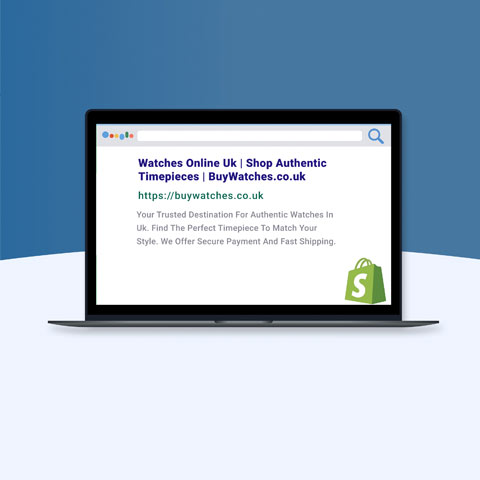Why Integrate Social Media Into Your Commerce Marketing Strategy?


PPC is a low risk, easily measurable, highly flexible way to reach your target audience - and advertising on social media is a natural extension of that. It's one of the fastest and most effective ways to generate conversions.
More and more brands are jumping into paid social advertising. Compared to more traditional marketing channels, such as television, social media is accessible for all types of budgets. Indeed, social media advertising is a must if you want to quickly reach a new target audience. These marketing channels are incredibly profitable and versatile. In a similar way to search engine advertising, social media gives advertisers the ability to create marketing campaigns by selecting performance targets at relatively low costs.
Consider your target audience
It’s important to know that all major social media offer advertising options, but that doesn’t mean you should use them all. For example, Instagram, Facebook, Snapchat and Pinterest are appropriate for companies that are B2C, compared to Linkedin which would be more appropriate for B2B.
Tips for choosing which social media to place your ads on: When you think about where to advertise on social media, look at which ones work well organically for your brand. Organic would be publications that you don’t pay for. Social networks where your content naturally touches fans’ heartstrings are an obvious choice for your first social advertising campaigns.
Define the goals of your campaigns
There are different marketing goals for your social media promoted campaigns depending on what you want to accomplish. With your social advertising campaigns, you can do the following:
- Increase brand awareness (and increase your customers/followers engagement)
- Send traffic to your website and generate leads
- Convert internet users interested in your products (with the retargeting option)
What kind of budgets?
The advantage of advertising on social media is that you can create a campaign for any budget. Unlike a marketplace, there is no fixed amount to pay per month. On most social networks, you bid for your ads to be shown. You can specify a budget to get a certain result like an amount of clicks or to maximise your daily budget. When you create your ad, the social media ads manager provides you with a recommended bid based on your business objectives.
What influences the bid recommended by the social media ad manager? The costs of your ads for social media advertising is based on a mix of different aspects such as the quality of your ad, your objectives, the target audience, the country where you want to advertise, or even the day or period selected.
Which social networks to choose?
When choosing where to place your ads, it is also useful to know which social media networks are most popular with your target audience. Below, you can read about different social media networks including their audiences and properties.
Facebook the giant
As the network with the largest user base, Facebook is the number one social media in the world. It is therefore difficult to skip it in your strategy. Facebook is an excellent platform to start social advertising on. In addition to having enormous audience potential, Facebook has the advantage of being visual and offering multiple audience segmentation options. For example, with the pixel system, you can reach internet users who have already visited your website and/or application via retargeting. Above all, you can target audiences according to their interests, affinities, location, etc.
If you have already implemented Facebook Dynamic Ads and want to improve the performance of your campaign, a feed management tool like Channable could help you. This will ensure that your Facebook ads are always up to date, you can pause products ads with no stock, and you can check the quality of your feed before sending it to the Facebook business manager.
Instagram is not only for influencers
Instagram is an extremely visual social network, where users ‘like’ a vast number of images. An advantage of using Instagram is that it belongs to Facebook. Therefore, to advertise there you can use the same feed as the one prepared for Facebook. This social network is very popular among new generations between the ages of 12 and 35.
Snapchat shows that your brand is on top of industry trends!
Snapchat is relatively new compared to Facebook or Instagram. Its audience is very young and eager for technology. Nearly three-quarters of young people aged between 18 and 24 use the application. The tone on Snapchat is rather relaxed, fun, and informal.
Pinterest is not only an inspiring site
Think of Pinterest as a product search engine where you can do visual advertising, a bit similar to Google Shopping. The particularity of Pinterest means that users might not directly buy your product and the conversion time is longer than on other marketing channels. On Pinterest, users are looking for inspiration and ideas. They can therefore “pin” an image that interests them. Your ad will appear right between the pinned posts.
Bear in mind that the majority of Pinterest users are women between 25 and 50. Pinterest is the place to be if you are an advertiser in an industry that relates directly or indirectly to marriage, cooking or fashion.
A concrete guide for creating ads for social media
Most of these platforms have an ad manager for creating, organizing and managing your campaigns on social networks. Create ads by sending your product information in a product data feed. For those who are not familiar with this term, it is simply a file that contains all your product information. Often the format of the file is an XML.

However, by using this type of “manual” method, it makes managing ads very difficult and tedious. Imagine that every time your product catalog or product information changes (e.g. a new collection or pricing during sales), some products are out of stock or you want to create campaigns for only a part of your catalog, you will have to create a new feed and reset your campaigns each time.
This is where data feed management tools come in.
Why use Channable to advertise on social networks?
Product feed management tools simplify the integration and management of your catalog on multiple platforms. With Channable, you can import your product information to enable advertising on Facebook, Instagram, Snapchat or Pinterest.

Not only are all your social media feeds prepared and optimized in the same interface, but they can also be directly synced with your online shop. Simply import your product data into Channable and create new feeds for the social media network of your choice. Then, your feeds will be updated (with the information available on your online shop) every day in Channable to ensure you always have the most up-to-date ads
In summary, you centralize all your product information in a single interface so that it is updated every day on all platforms where you advertise! Channable contains all the information about the data and formats you need to submit to Facebook, Instagram, Snapchat or Pinterest!
Want more like this?
Want more like this?
Insight delivered to your inbox
Keep up to date with our free email. Hand picked whitepapers and posts from our blog, as well as exclusive videos and webinar invitations keep our Users one step ahead.
By clicking 'SIGN UP', you agree to our Terms of Use and Privacy Policy


By clicking 'SIGN UP', you agree to our Terms of Use and Privacy Policy
Other content you may be interested in
Categories
Categories

Want more like this?


Want more like this?
Insight delivered to your inbox
Keep up to date with our free email. Hand picked whitepapers and posts from our blog, as well as exclusive videos and webinar invitations keep our Users one step ahead.
By clicking 'SIGN UP', you agree to our Terms of Use and Privacy Policy






![[Research] Apps: The Secret Engine of Ecommerce Growth [Research] Apps: The Secret Engine of Ecommerce Growth](https://images.bizibl.com/sites/default/files/apps-and-web-similarweb-480.jpg)


